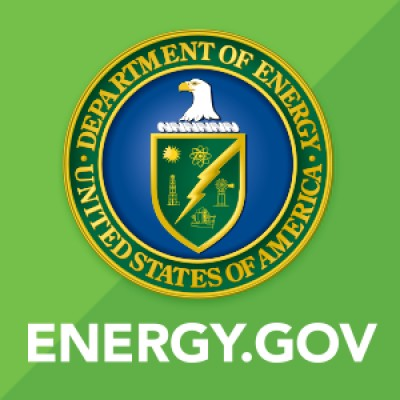The Data Center Energy Surge: A Looming Crisis for America’s Power Grid
December 21, 2024, 7:24 am

Location: United States, District of Columbia, Washington
Employees: 10001+
Founded date: 1977
Total raised: $45M
The digital age is a double-edged sword. On one side, it offers unprecedented connectivity and innovation. On the other, it threatens to drain our energy resources. A recent report from the Lawrence Berkeley National Laboratory, backed by the Department of Energy, paints a stark picture of the future. By 2028, U.S. data centers could consume as much as 12% of the nation’s electricity. This surge is driven by the rapid adoption of artificial intelligence (AI) technologies, which require vast amounts of computational power and energy.
Imagine a balloon inflating rapidly. That’s the data center industry right now. Between 2017 and 2023, power demand from these facilities more than doubled. The main culprit? The rise of AI servers, which are hungry for energy. These servers need powerful chips and intense cooling systems, pushing energy consumption to new heights.
Currently, data centers account for just over 4% of the country’s power load. But the trajectory is alarming. By 2028, estimates suggest that energy use could soar to between 74 and 132 gigawatts. This is not just a number; it represents a significant strain on the electrical grid. The implications for power bills and climate change are profound.
The report highlights a critical need for transparency in the industry. Data centers often operate in secrecy, with proprietary information shielding their energy consumption practices. Researchers advocate for the collection of anonymous data on electricity use, compute capabilities, and workload types. This transparency could unveil opportunities for efficiency improvements. Understanding what drives energy use is essential for addressing the looming crisis.
The shift to AI is a game-changer. When the last report was released in 2016, AI servers accounted for a mere 2% of total server energy use. Fast forward to today, and that number has skyrocketed. The demand for GPU-accelerated servers has transformed the landscape. These powerful chips are essential for AI applications, but they come at a cost—an insatiable appetite for energy.
The report’s lead researcher emphasizes the need for regular updates. Annual or biannual reports could help track trends and adapt strategies accordingly. As the industry evolves, so too must our understanding of its energy demands. The current data is based on calculations from installed GPUs and other IT equipment, but it’s only the tip of the iceberg.
The energy implications extend beyond just data centers. As these facilities consume more power, the strain on the electrical grid will increase. This could lead to higher power bills for consumers and businesses alike. The ripple effects could be felt across the economy, as energy costs rise and availability becomes uncertain.
Moreover, the environmental impact cannot be ignored. Increased energy consumption translates to higher carbon emissions, exacerbating climate change. The urgency for energy-efficient strategies is paramount. The report suggests further research into energy-saving technologies for AI data centers. Innovations in cooling systems and energy management could mitigate some of the impending challenges.
The rise of AI is akin to a tidal wave. It brings with it opportunities for growth and innovation, but also significant risks. As companies rush to harness the power of AI, they must also consider the environmental and economic consequences. The balance between technological advancement and sustainability is delicate.
The U.S. power industry and government agencies are at a crossroads. They must grapple with the implications of this data center energy surge. Policymakers need to engage with industry leaders to develop strategies that promote energy efficiency. This collaboration is essential for safeguarding the electrical grid and ensuring a sustainable future.
In conclusion, the data center energy surge is a pressing issue that demands immediate attention. The projected increase in power consumption is not just a statistic; it’s a warning. As we embrace the digital age, we must also be mindful of its energy demands. Transparency, innovation, and collaboration will be key to navigating this challenge. The future of our power grid—and the planet—depends on it.
Imagine a balloon inflating rapidly. That’s the data center industry right now. Between 2017 and 2023, power demand from these facilities more than doubled. The main culprit? The rise of AI servers, which are hungry for energy. These servers need powerful chips and intense cooling systems, pushing energy consumption to new heights.
Currently, data centers account for just over 4% of the country’s power load. But the trajectory is alarming. By 2028, estimates suggest that energy use could soar to between 74 and 132 gigawatts. This is not just a number; it represents a significant strain on the electrical grid. The implications for power bills and climate change are profound.
The report highlights a critical need for transparency in the industry. Data centers often operate in secrecy, with proprietary information shielding their energy consumption practices. Researchers advocate for the collection of anonymous data on electricity use, compute capabilities, and workload types. This transparency could unveil opportunities for efficiency improvements. Understanding what drives energy use is essential for addressing the looming crisis.
The shift to AI is a game-changer. When the last report was released in 2016, AI servers accounted for a mere 2% of total server energy use. Fast forward to today, and that number has skyrocketed. The demand for GPU-accelerated servers has transformed the landscape. These powerful chips are essential for AI applications, but they come at a cost—an insatiable appetite for energy.
The report’s lead researcher emphasizes the need for regular updates. Annual or biannual reports could help track trends and adapt strategies accordingly. As the industry evolves, so too must our understanding of its energy demands. The current data is based on calculations from installed GPUs and other IT equipment, but it’s only the tip of the iceberg.
The energy implications extend beyond just data centers. As these facilities consume more power, the strain on the electrical grid will increase. This could lead to higher power bills for consumers and businesses alike. The ripple effects could be felt across the economy, as energy costs rise and availability becomes uncertain.
Moreover, the environmental impact cannot be ignored. Increased energy consumption translates to higher carbon emissions, exacerbating climate change. The urgency for energy-efficient strategies is paramount. The report suggests further research into energy-saving technologies for AI data centers. Innovations in cooling systems and energy management could mitigate some of the impending challenges.
The rise of AI is akin to a tidal wave. It brings with it opportunities for growth and innovation, but also significant risks. As companies rush to harness the power of AI, they must also consider the environmental and economic consequences. The balance between technological advancement and sustainability is delicate.
The U.S. power industry and government agencies are at a crossroads. They must grapple with the implications of this data center energy surge. Policymakers need to engage with industry leaders to develop strategies that promote energy efficiency. This collaboration is essential for safeguarding the electrical grid and ensuring a sustainable future.
In conclusion, the data center energy surge is a pressing issue that demands immediate attention. The projected increase in power consumption is not just a statistic; it’s a warning. As we embrace the digital age, we must also be mindful of its energy demands. Transparency, innovation, and collaboration will be key to navigating this challenge. The future of our power grid—and the planet—depends on it.
